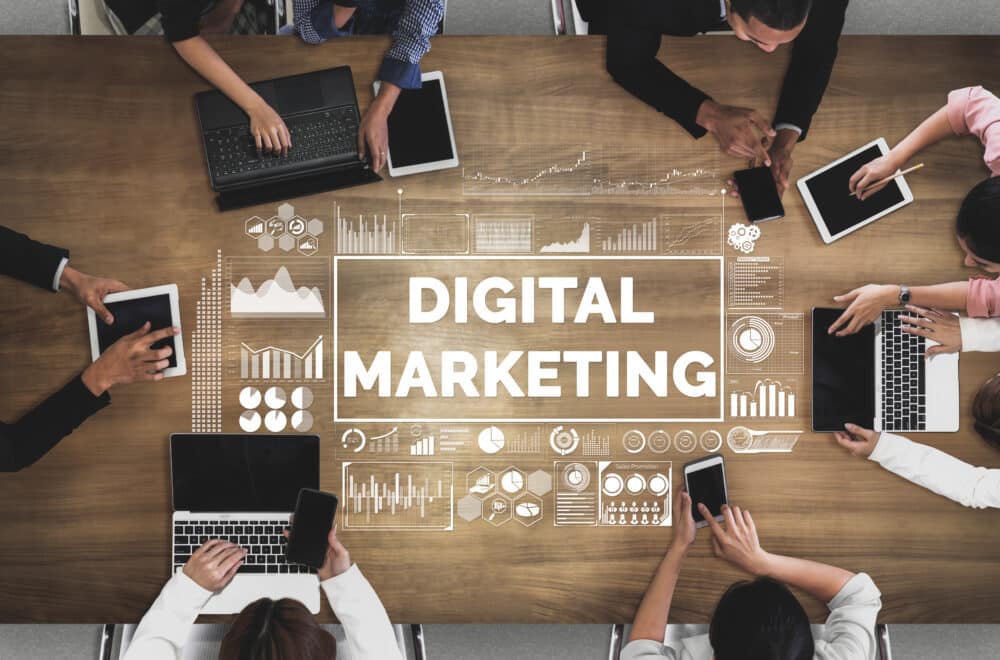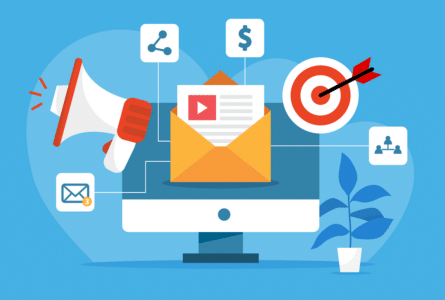With the advent of Web 2.0 and the authority of social media, but also the way the Covid-19 pandemic has profoundly changed our lifestyles, work and accelerated the digitalization of our consumption, the reputation of a brand or a company has become synonymous with e-reputation.
Leaving a comment under a post or sharing your experience after making an online purchase has become a commonplace act. However, we often underestimate the power of the Internet and going viral: many “likes” or an accumulation of negative opinions can literally build or tarnish the image of an organization in record time! This is why digital reputation is so important for businesses.
As professionals involved in the digital sphere and e-commerce, this issue concerns all of us: the increasing importance given to customer reviews means that e-reputation has become key to online buyer decisions and for building customer loyalty.
Here are 5 key points that will allow you to better understand what’s at stake for your e-reputation and how to control it.
What Is an E-Reputation?
E-reputation is defined as the (subjective) image a brand or company reflects online. This image is built on 3 main factors:

The digital identity put forward by the company
corporate communication, advertisements, social media posts, etc.

Authority
Recognition of the company’s history, quality, credibility

Community voice
Comments on social media posts or articles; reviews on specialized sites; shares; blogs and user forums; etc.
While digital identity is the "manageable" part of one's image, a company or product’s digital reputation is built and adapted through influencers (customers, ambassadors, web journalists, associations), who share a positive or negative opinion.
Your E-Reputation: How to Monitor It?
There are several "digital spaces" to monitor closely to be aware of the state of your e-reputation:
Search Engines Such as Google

"Your brand is not what you say about it, but what Google says about it."
This quote from Chris Anderson, editor-in-chief of Wired, an American magazine dedicated to new technologies, clearly defines the power of search engines. Generally the websites that are in the top search engine results include customer reviews. If websites full of negative customer reviews come up first, you will need to work on your organic search engine optimization so that the positive pages related to your company or product are more visible on Google.* Google does not put forward the most recent sites, but the sites with the most optimized content! Today, e-reputation has basically become G-reputation (G for Google).
Online Review Sites

Take the time to look at review platforms related to your activity or sector and read what people are saying about you and your products.
These play a major, even decisive, role for your online image. It is therefore important to keep a strategic watch on these sites and to put in place solutions to counter negative comments and false reviews from competitors.
Social Media

The importance of social media is no longer a question. As a place for public discussions and exchange, social media is now one of the first points of contact for Internet users. It's easier for a buyer to call out a company on Facebook or Instagram to ask a question or complain about a bad experience than it is to call customer service and not get results. On social media, written words are indelible and can quickly circulate: it can happen that Internet users unite and form groups against brands or products, these groups will influence other social media users and tarnish your reputation.
Why Should You Care About Your E-Reputation? What’s at Stake?
Being visible and communicating online is an obvious way to succeed and increase sales, but digital presence is a double-edged sword: if a company neglects its popularity online for too long, there can be several consequences.
Prolonged lack of attention or neglect of your e-reputation can have an impact on your business development, customer relations, employer brand, general reputation, visibility, etc.
And if we focus on e-commerce activity, in the current context of accelerated digitalization, with a growing number of online buyers, poorly managing your e-reputation will have that much more impact.
Because, as we all know, a buyer's journey is not linear. They compare several offers on several marketplaces, look for the description that best meets their needs and consult previous reviews. In short, they will investigate and compare before making a personal judgment that will lead them to place an order.
This means your e-reputation has a potential impact on the attractiveness of your products or services, and a potential impact on your sales and turnover. This impact can be measured by:
- A drop in traffic to your website
- A decrease in the number of customers
- A drop in sales resulting in a loss of market share
How Do You Set Up an E-Reputation Strategy?
Given that information sharing can be extremely fast and go viral quickly, and that a company's positive image can gradually deteriorate without its knowledge, it’s essential to implement an e-reputation strategy.
This strategy is easy to implement and will need to include 3 steps:

Detect

Communicate

Improve
The detection phase is a kind of audit: an e-reputation audit allows you to take stock of your presence on the web. This audit, essential for your strategy, should be done in the form of monitoring and will allow you to:

GET AN IDEA OF YOUR BRAND/ORGANIZATION’S IMAGE ON THE WEB
By detecting where people are airing their opinions and what Internet users’ sensitive subjects are: Who’s mentioned you? What subjects were broached? Who communicates the most and how? What is the tone?

FIND OUT YOUR CUSTOMERS’ NEEDS
In addition to monitoring, you will need to do some general research on your field of activity. Based on the terms that characterize your activity, you can analyze the type of information posted by Internet users. This data is important because it allows you to better understand your web ecosystem and better respond to your customers' expectations by continuously improving your offer or services.

ANALYZE YOUR COMPETITORS' STRATEGIES
It is important to look at the competition and understand their communication strategy.

MAKE INFORMED DECISIONS
Once all the data has been analyzed, a strategic direction can be defined. This informed response, based both on quantitative and qualitative data, will allow you to determine a general editorial line for your communication. Which media are the most relevant for you? What is the specific editorial line for each of them?
A thoughtful choice should be made according to your target audience, the type of content expected on each network and communication opportunities.
After the detection audit comes the communication phase. You will need to set an editorial line supported by a communication plan.
A number of questions will help you prepare your editorial line:
- What is the goal of your organization? What are the values?
- Who are you addressing? Potential customers? Users? Partners? Influencers? The media?
- What will you bring to your audience in terms of content and information? What are your targets’ interests?
- What type of content will you create? Expert articles, infographics, video interviews, etc.
- How often will you post content? On which channels?
- What means do you have in terms of budget and human resources?
Lastly, you should think about improving your e-reputation by adopting marketing and customer service reflexes.
Solicit feedback from your buyers with satisfaction surveys, answer questions from your community on social networks, handle negative reviews by responding quickly, detect the first signs of an e-reputation crisis by using monitoring tools... In short, listen to all comments and suggestions from your customers. Negative user reviews may seem discouraging, but taking them into account will help improve your image and your offer.
Integrate Managing Your E-Reputation into an Overall Web-Marketing Strategy
Today, e-reputation can’t be dissociated from the different online communication strategies that were previously treated separately : digital marketing, SEO, community management and digital content management.
E-reputation is closely linked to web-marketing practices and is considered both a driver and a goal in and of itself.

- A driver since a controlled e-reputation has direct a direct impact on business. In fact, 9 out of 10 B2B buyers are more likely to purchase a product or service after reading a trusted online review according to a study conducted by G2 Crowd; and 61% of B2B buyers find companies with between 11 and 50 recent reviews more trustworthy.
- A goal because it is quite possible to establish a web-marketing objective of having a “good e-reputation” which can be measured by a number of positive reviews, an average customer rating, a number of mentions on the Web, a number of shares of posts on social networks, an increase in audience or traffic, etc. To achieve this goal, it’s necessary to ensure that the image you desire to convey corresponds with the image that will be perceived by Internet users : the less the discrepancy between the two, the more the goal can be considered achieved. But, just like in web-marketing, such a result can only be achieved if a target audience is defined beforehand, and if numerous indicators are in place to measure the effectiveness of the actions taken to this end.
A successful digital marketing strategy from an e-reputation point of view is therefore a strategy that not only allows you to be visible online, but above all to be visible in a good light to buyers.
Your e-reputation is connected to your digital communication. It relies on the SEO, community management and digital marketing strategies that you set up. The strategic actions you take and your dialogue with your community will strengthen your online presence and convey a specific image of your company or brand.
Ready to get started?

*Mainly Google, since it holds 91.5% of the market share.










